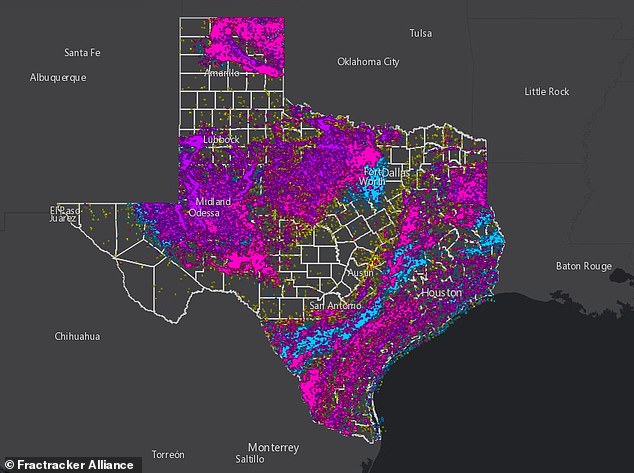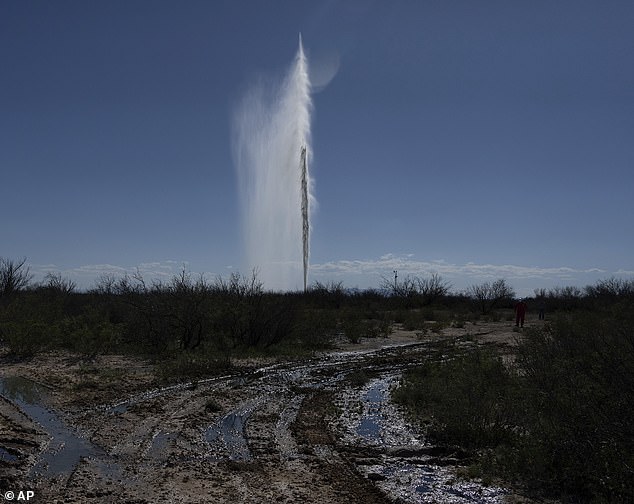A mysterious geyser erupted in a West Texas oil field on Wednesday, sending oil-tainted salt water 100 feet into the air.
Rescuers reported a smell of oil and rotten eggs coming from the geyser, which is a sign of hydrogen sulfide gas.
The vapors are poisonous and are typically present in natural gas reservoirs, and at high levels, exposure can cause shock, seizures, coma, and death.
The geyser was located off Interstate 20 near Toyah in Reeves County, an area known for fracking sites that inject wastewater into the ground.
This comes amid a series of earthquakes that have hit the region and which experts say are due to fracking.
A geyser erupted in Texas on Wednesday, spewing oil-contaminated salt water 100 feet into the air (pictured)
Reeves County Emergency Management responded to the geyser and reported that toxic fumes from the eruption measured 250 parts per million.
The measurement is considered a moderately high level and can cause symptoms such as nausea, burning throat, dizziness and headaches.
Oil and gas attorney Sarah Stogner and well control specialist Hawk Dunlap also responded to the eruption and told the Houston Chronicle that the area has been plagued by geyser eruptions, like this one, that emerged from ‘zombie’ wells.
A zombie well is an abandoned oil or gas well that leaks toxic waste into groundwater but can erupt if not filled properly.
Local officials blame the Texas Railroad Commission (RRC) for the eruptions, saying the wells should be plugged once they are no longer needed for hydraulic fracturing.
West Texas has been hit by a recent series of earthquakes, the strongest of which was a magnitude 3.2 earthquake that occurred earlier that day and originated 134 miles away from the geyser in Midland, Texas.
Wastewater injections have been linked to increased seismic activity, and in January the commission suspended 23 permits that allow oil and gas companies to inject wastewater into the ground after finding their practices were causing faults to rupture. , which caused earthquakes.

Scientists have attributed the recent series of earthquakes in Texas to hydraulic fracturing and have determined that increased seismic activity could be causing the geysers to erupt. Pictured: Hydraulic fracturing and injection well locations in Texas.
Texas is listed as the number one state for hydraulic fracturing – or fracking – and, as of 2023, that number had increased to 373,133 active wells.
Fracking involves miners drilling deep into the earth’s surface and releasing high-pressure water that creates a small explosion to release natural gas and oil that can be used to generate energy.
The action brings groundwater to the surface and when it is injected back into the ground, it puts pressure on faults, causing more earthquakes.
Last year, the RRC told fracking operators that it plans to begin suspending permits that allowed companies to inject wastewater into the ground, although it has not indicated when that would take effect.
DailyMail.com has contacted the Texas Railroad Commission and Reeves County Emergency Management for comment.


